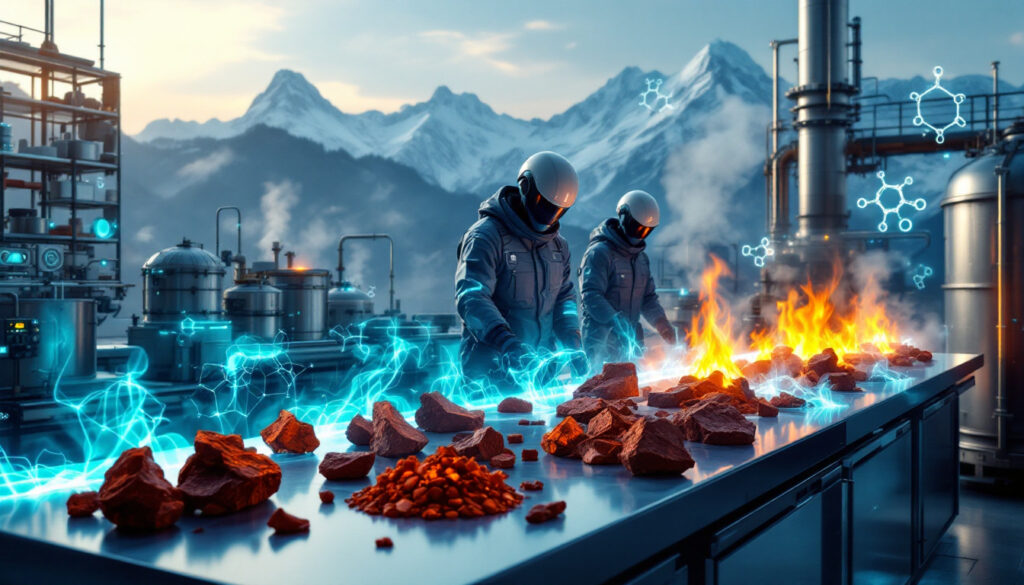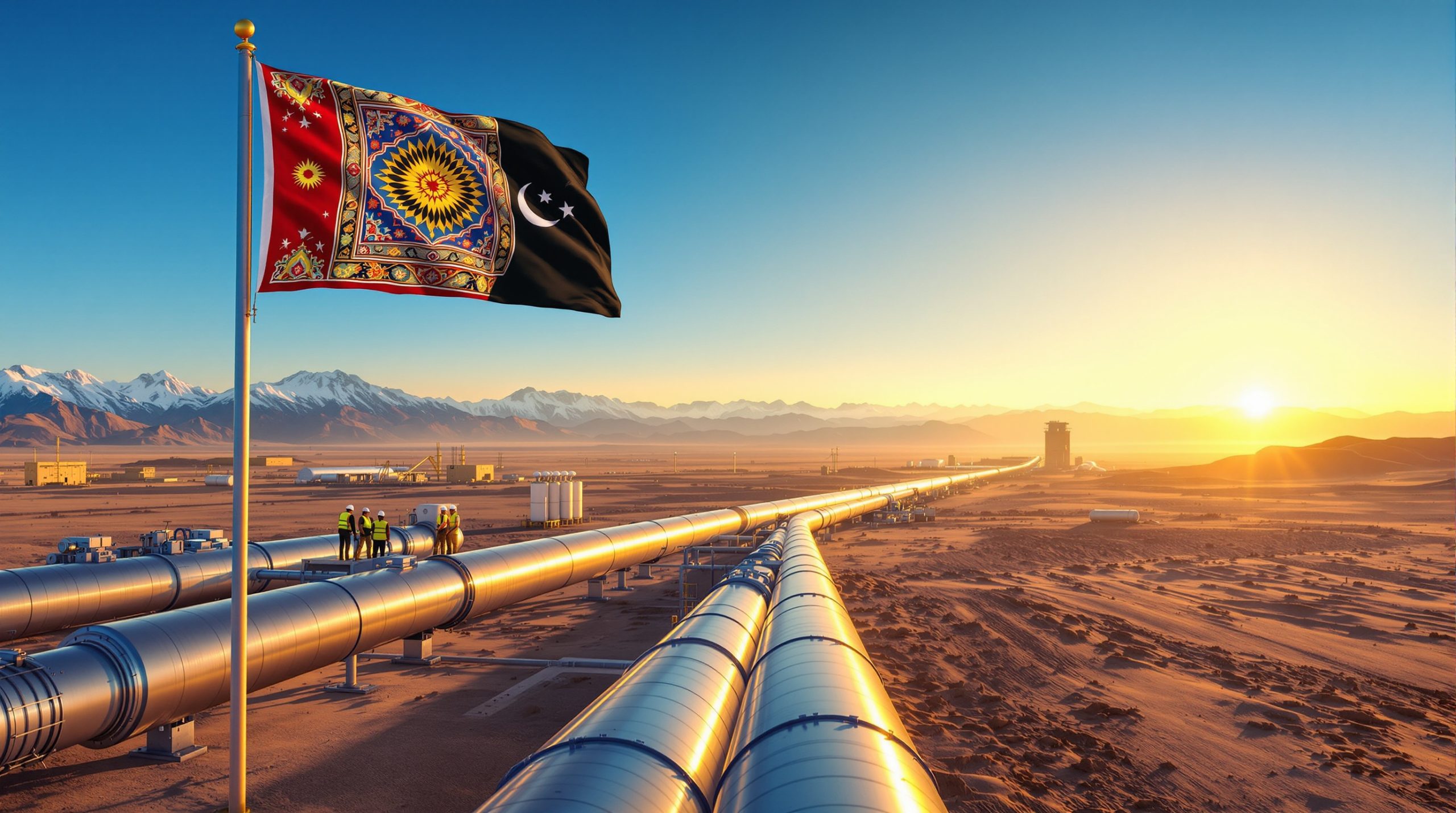Rio Tinto's Zero-Carbon Steel Partnership in Austria: A Breakthrough in Green Steelmaking
Rio Tinto has taken a significant step toward revolutionizing the steel industry by entering a groundbreaking partnership to develop a zero-carbon steel plant in Austria. This collaboration marks a pivotal moment in the global effort to decarbonize one of the most carbon-intensive industrial sectors, potentially transforming how steel is produced worldwide.
The Groundbreaking Hydrogen-Based Steel Plant Project
The ambitious zero-carbon steel initiative brings together industry leaders from across the global materials and manufacturing sectors. At the heart of this partnership is Rio Tinto's commitment to supplying 70% of the iron ore needed for the new hydrogen-based steelmaking facility, demonstrating the mining giant's strategic pivot toward supporting green technologies.
Key Partnership Details
The collaboration unites Rio Tinto with Austrian steelmaker Voestalpine and steel-making technology provider Primetals Technologies in a first-of-its-kind venture. Mitsubishi Corporation has also joined as a supporting partner, bringing additional technical expertise and financial resources to the project.
The test facility will be constructed at Voestalpine's existing site in Linz, Austria, strategically chosen for its infrastructure and proximity to European markets. This location also aligns with the European Union's ambitious climate targets and positions the project to benefit from regional decarbonization initiatives.
"This partnership represents a significant milestone in our journey toward carbon-neutral steel production," said a Voestalpine spokesperson. "By combining our metallurgical expertise with Rio Tinto's high-quality iron ore and Primetals' technological innovation, we're creating a blueprint for the future of steelmaking."
Technical Specifications and Timeline
The facility is designed with a production capacity of three tons of metal per hour—a scale sufficient to validate the technology while allowing for rapid adjustments and optimizations before full commercial deployment. This careful approach reflects the partners' recognition of the technical challenges involved in scaling hydrogen-based steelmaking.
Operations are scheduled to begin in mid-2027, with a rigorous testing phase planned to ensure the technology meets both environmental and performance standards. Industry analysts note that this timeline allows for thorough development while still positioning the partners as early movers in the green steel market.
The project has secured substantial funding from both the Austrian government and European Union programs focused on industrial decarbonization. These public investments highlight the strategic importance of developing zero-carbon steel technologies as part of broader climate policy objectives.
How Does Zero-Carbon Steelmaking Technology Work?
The Hydrogen Revolution in Steel Production
Traditional steelmaking relies on coal-based blast furnaces that produce approximately 1.85 tons of CO2 for every ton of steel produced. In stark contrast, the hydrogen-based process being developed in this partnership could potentially eliminate these carbon emissions entirely.
The technology utilizes hydrogen as the reducing agent instead of carbon-rich coal. When hydrogen reacts with iron ore, it removes oxygen to produce metallic iron and water vapor, rather than the carbon dioxide generated in conventional processes. This fundamental chemical difference is what enables the dramatic emissions reduction.
A particularly innovative aspect of this technology is its ability to directly use iron ore without first forming it into pellets—a process that typically requires additional energy and resources. This direct reduction approach represents a significant technological advancement and could provide both environmental and economic benefits.
"The direct reduction of iron ore using hydrogen is particularly promising because it retains the high-quality characteristics of the input material," explained Dr. Markus Eckhardt, a metallurgical expert familiar with the project. "This means we can produce premium steel grades with significantly lower environmental impact."
Rio Tinto's Technical Contribution
Rio Tinto's role extends beyond simply supplying raw materials. The company is providing critical technical expertise regarding iron ore quality and composition—factors that significantly impact the efficiency of hydrogen-based reduction processes.
The mining giant will supply 70% of raw materials from its global operations, carefully selected to optimize performance in the hydrogen-based process. This highlights an important but often overlooked aspect of green iron revolution: the need for specialized raw material inputs tailored to new production methods.
Rio Tinto's involvement also includes supporting the acceleration of the technology's market readiness through its research capabilities and industry connections. The company's participation represents a strategic pivot toward positioning itself as an enabler of low-carbon industrial transformation.
Why Is This Partnership Significant for Decarbonizing the Steel Industry?
Steel Industry's Environmental Impact
The steel industry accounts for approximately 7-9% of global carbon emissions, making it one of the largest industrial contributors to climate change. This outsized carbon footprint stems from the industry's scale—with global production exceeding 1.9 billion tons annually—and its historical reliance on coal-based production methods.
Traditional integrated steel mills use blast furnaces and basic oxygen furnaces that require coke (processed coal) as both a fuel and reducing agent. Even more efficient electric arc furnaces still generate significant emissions when powered by fossil fuel electricity.
The hydrogen-based production method being developed in Austria represents a pathway to drastically reduce the sector's carbon footprint by addressing the fundamental chemistry of ironmaking. If scaled successfully, this technology could transform steel from a climate problem into a sustainable material solution.
Industry experts estimate that transitioning just 10% of global steel production to hydrogen-based methods could reduce carbon emissions by approximately 170 million tons annually—equivalent to removing over 37 million passenger vehicles from roads.
Strategic Importance for Global Climate Goals
The Austrian project serves as a prototype for future zero-carbon steel facilities and demonstrates the technical feasibility of producing steel without carbon emissions. This proof-of-concept is crucial for building confidence in hydrogen steelmaking as a viable pathway for industry decarbonization.
The partnership aligns perfectly with the European Union's ambitious decarbonization initiatives, including the European Green Deal and the "Fit for 55" package that aims to reduce net greenhouse gas emissions by at least 55% by 2030. Steel industry transformation is explicitly targeted in these policies, with hydrogen identified as a key enabling technology.
Perhaps most significantly, this collaboration represents unprecedented cooperation between the mining, steel production, and technology sectors—industries that have traditionally operated in separate spheres. This cross-sector approach addresses the entire value chain, from raw material extraction to finished steel production.
The Economic Implications of Green Steel Production
Cost Considerations and Efficiency Improvements
The economics of hydrogen-based steelmaking are evolving rapidly. While hydrogen production currently carries higher costs than traditional carbon-based processes, several factors suggest a favorable trajectory:
Direct processing without pelletization can reduce production costs by eliminating an energy-intensive step in the manufacturing process. Industry analysis suggests this could reduce capital expenditure by 15-20% compared to conventional direct reduction plants.
The process demonstrates lower energy consumption in the iron reduction phase, improving overall efficiency. Recent technological breakthroughs have reduced energy requirements by approximately 30% compared to first-generation hydrogen reduction methods.
Green hydrogen costs are projected to fall by 50-70% by 2030 as electrolyzer technology improves and renewable electricity becomes more abundant. This cost decline represents the most significant factor in making hydrogen steel economically competitive with conventional methods.
"The cost curves for green hydrogen and conventional steelmaking are moving in opposite directions," noted energy economist Dr. Helena Vargas. "As carbon prices rise and hydrogen production becomes cheaper, we'll reach a crossover point where green steel becomes the economically rational choice, not just the environmentally preferable one."
Market Positioning and Future Growth
The partnership creates new market opportunities for low-carbon steel products, which are increasingly demanded by sustainability-focused consumers and manufacturers. Automotive and construction sectors have already signaled willingness to pay premiums of 10-15% for verifiably low-carbon steel.
For the partner companies, this project positions them as leaders in sustainable materials production, potentially offering first-mover advantages in an emerging market segment. The global green steel market is projected to exceed $2.5 trillion by 2050, representing a massive opportunity for early technology adopters.
Perhaps most importantly, the Austrian facility establishes a framework for scaling technology to commercial production levels. Lessons learned from this pilot will inform larger installations planned throughout Europe and globally, with several 1+ million ton per year facilities already in various planning stages.
The Geopolitical Dimension of Green Steel Development
Shifting Global Industrial Leadership
The race to develop commercially viable green steel technology has significant geopolitical implications. Traditional steel powerhouses like China and India, which rely heavily on coal-based production, face pressure to adapt or risk losing market share to regions pioneering cleaner technologies.
European manufacturers, backed by supportive policy frameworks and carbon pricing mechanisms, are positioning themselves at the forefront of this transition. The Austrian project exemplifies this strategy, leveraging public and private resources to develop competitive advantages in sustainable manufacturing.
For countries with abundant renewable energy potential, green steel presents an opportunity to develop new industrial strengths. Nations like Australia, Brazil, and Chile—traditionally raw material exporters—could evolve into producers of green steel intermediates by combining their mineral resources with renewable hydrogen production.
Supply Chain Resilience and Material Quality
The direct hydrogen reduction process being tested in Austria offers advantages beyond carbon reduction. The technology preserves more of the desirable properties of high-grade iron ore, potentially producing steel with superior metallurgical properties compared to conventional methods.
This quality advantage could prove particularly valuable for high-specification applications in aerospace, defense, and precision engineering—sectors where European and American manufacturers maintain leadership positions despite lower-cost competition from emerging economies.
FAQ About Rio Tinto's Zero-Carbon Steel Partnership
What makes this steelmaking process "zero-carbon"?
The process uses hydrogen instead of coal to reduce iron ore, potentially eliminating carbon emissions from the steelmaking process. When hydrogen reacts with iron oxide, it produces metallic iron and water vapor (H2O) rather than carbon dioxide (CO2), fundamentally changing the chemistry to avoid greenhouse gas emissions. The hydrogen itself can be produced using renewable electricity, creating a truly carbon-neutral production chain.
When will the plant be operational?
The project is scheduled to begin operations in mid-2027. This timeline includes a comprehensive construction phase, followed by commissioning and testing periods. The partners have adopted a deliberate schedule to ensure all mining industry ESG challenges are adequately addressed before bringing the facility online.
Who is funding the zero-carbon steel plant?
The project has secured funding from the Austrian government and European Union programs, with additional support from the corporate partners. This public-private funding model reflects the strategic importance of green steel development to European industrial policy and climate objectives. The exact funding breakdown has not been publicly disclosed, but similar projects have typically involved government grants covering 30-40% of capital costs.
What is Rio Tinto's specific role in the partnership?
Rio Tinto will supply 70% of the iron ore for the facility, contribute technical expertise on iron ore quality, and help accelerate the technology's market readiness. The company's metallurgical knowledge and extensive experience with iron ore properties are especially valuable in optimizing the hydrogen reduction process, which depends heavily on specific ore characteristics to achieve maximum efficiency.
The Path Forward for Green Steel Innovation
The Rio Tinto-Voestalpine-Primetals partnership represents a critical step forward in decarbonizing the steel industry, but it is just one component of a broader Australian mining green transformation. As hydrogen costs continue to decline and carbon pricing mechanisms expand globally, the economic case for zero-carbon steel will strengthen substantially.
Success in Austria could catalyze similar projects worldwide, potentially accelerating the transition toward cleaner industrial processes throughout the materials sector. The knowledge gained from this pilot facility will inform larger commercial applications, helping to establish standards and best practices for an emerging industry.
For policymakers, investors, and industry leaders, this decarbonising steel partnership demonstrates that even the most challenging sectors can find pathways to decarbonization through collaborative innovation and strategic investment. The future of steelmaking—once synonymous with pollution and environmental damage—may instead become an exemplar of sustainable industrial transformation, though many remain cautious about potential net-zero illusion explained in carbon accounting schemes.
Ready to Invest in the Next Major Green Mining Development?
Stay ahead of transformative mineral discoveries in the green energy transition with Discovery Alert's proprietary Discovery IQ model, which instantly identifies significant ASX announcements and turns complex data into actionable insights. Discover why major mineral finds can lead to exceptional returns by exploring our dedicated discoveries page and begin your 30-day free trial today.




